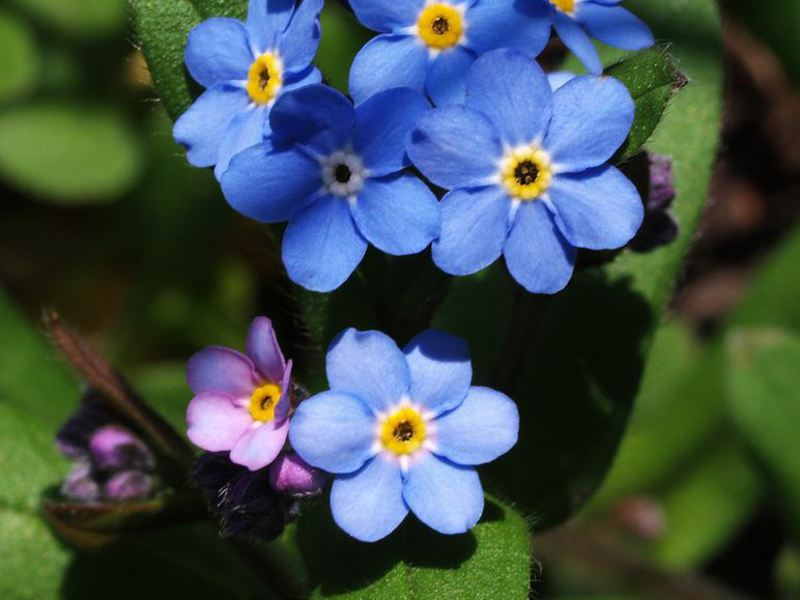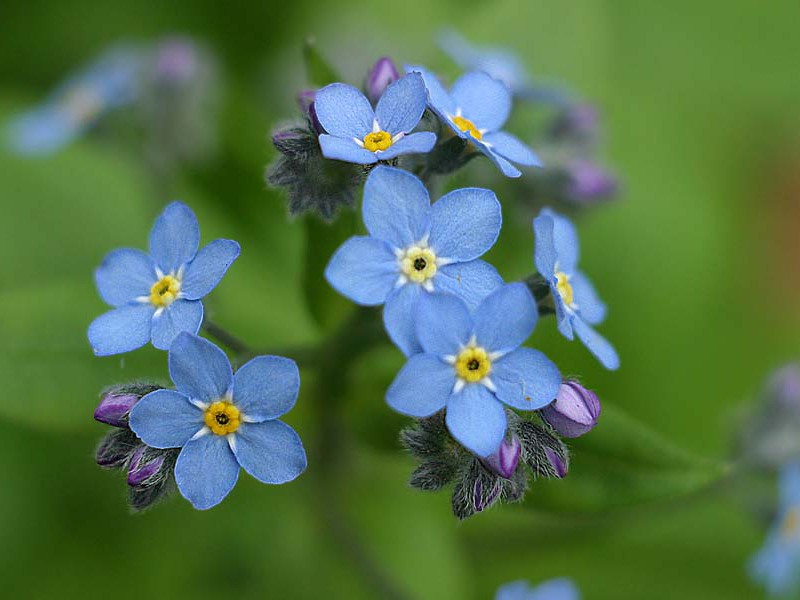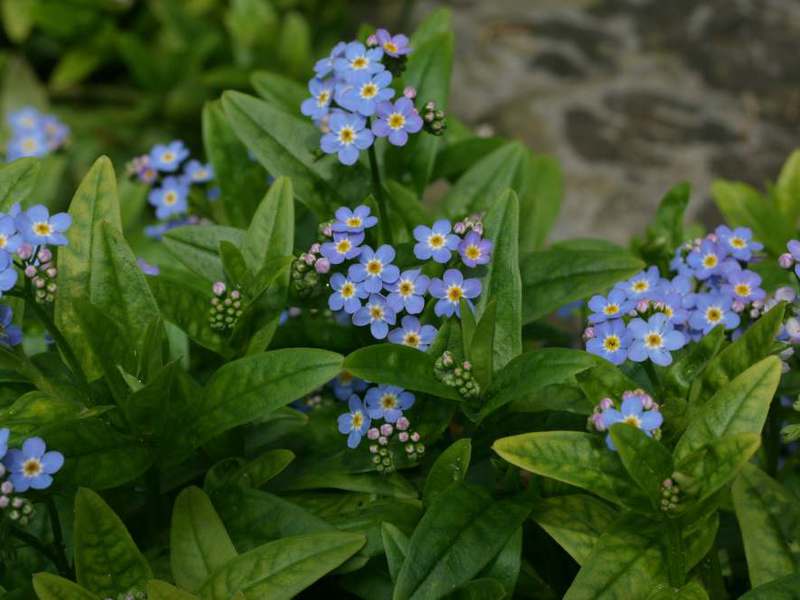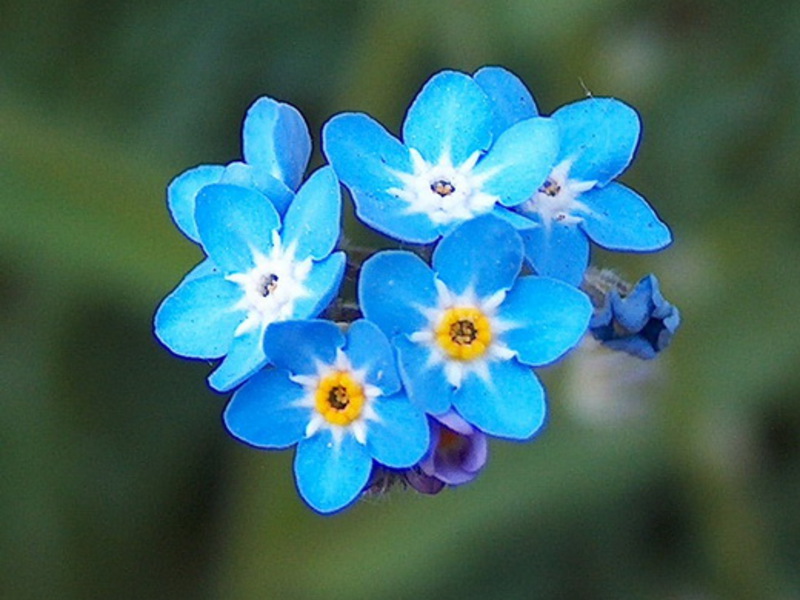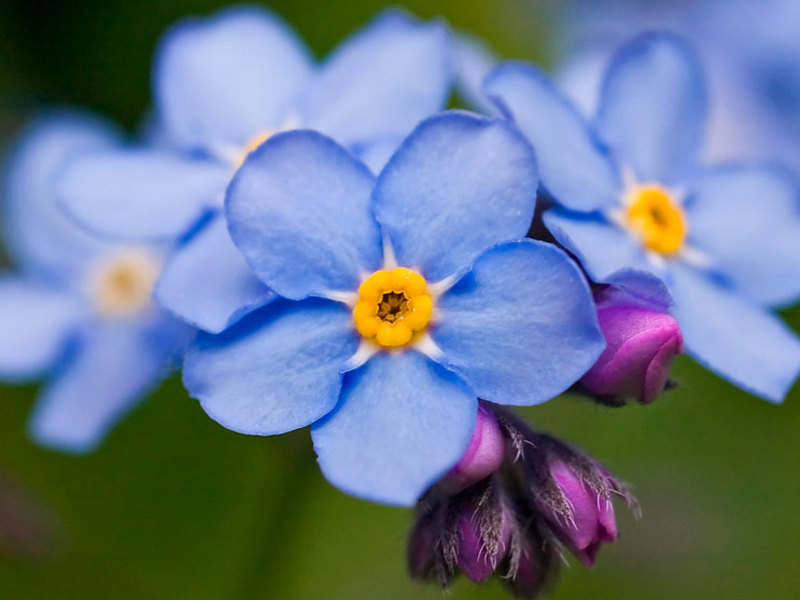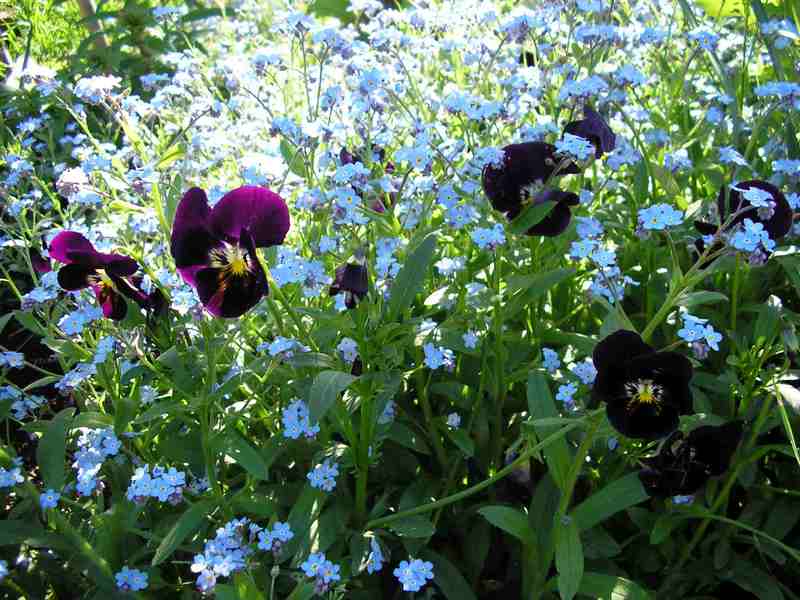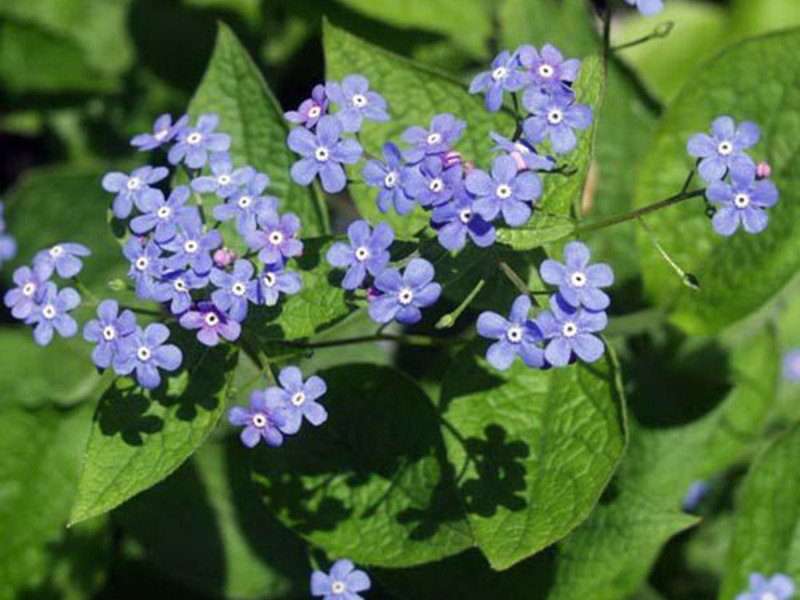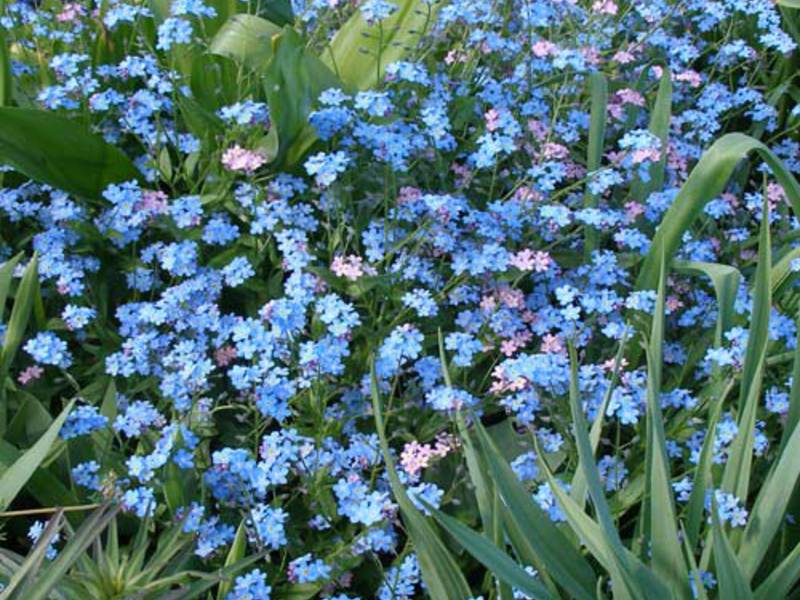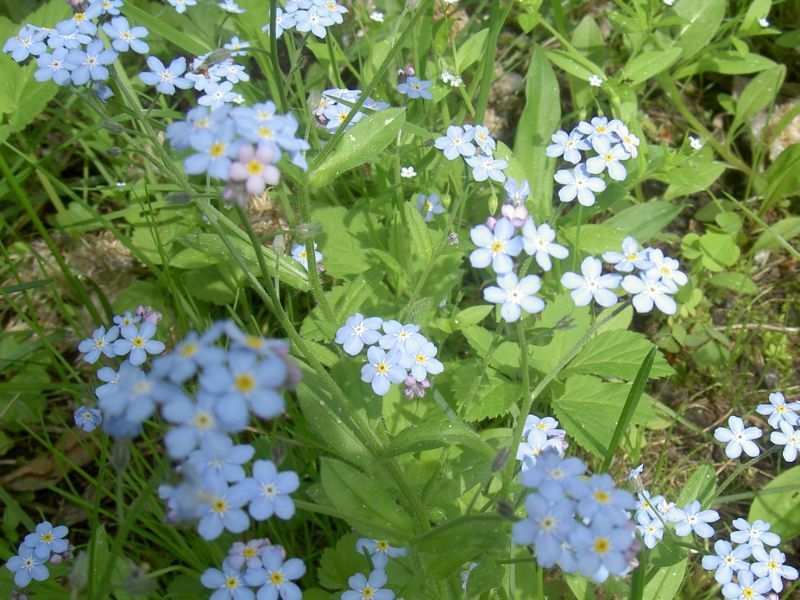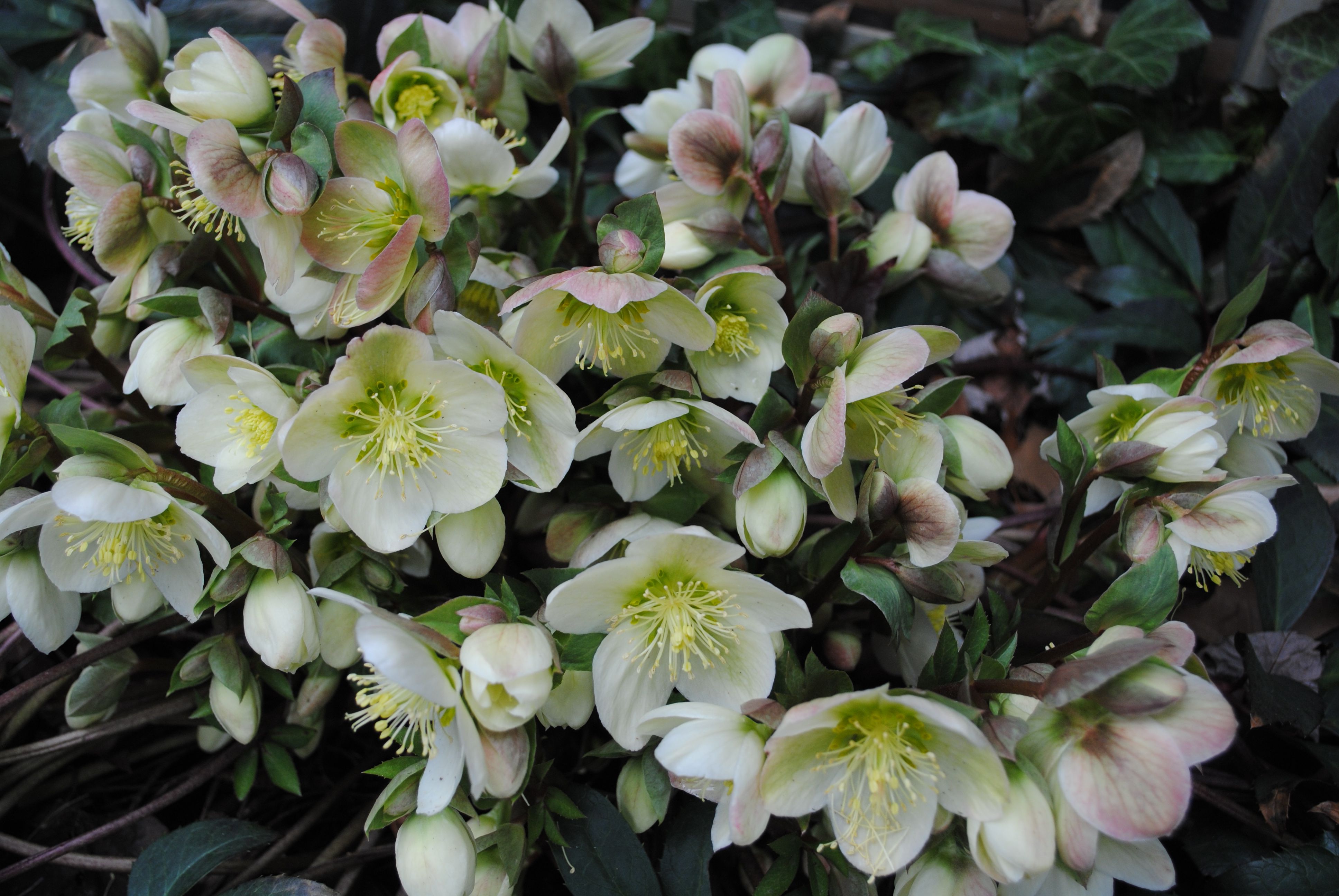The name of this flower is made up of two Greek words that mean "mouse" and "ear". In some species, the leaves have dense pubescence in the form of short hairs, which makes it look like the ears of mice. Forget-me-not has about 50 different species, belongs to the gimlet family. Most garden varieties are cultivars and hybrids that, when grown from seed, retain their characteristics.
Content
Folk legends
In our country, forget-me-nots have other names, for example, they call it a pristine, feverish herb, gourd. Different peoples have different legends associated with this flower, but they are all united the concept of loyalty and good memory... In Greece and German folklore, there is a legend about a shepherd named Likas, who gave his bride, saying goodbye to her, a bouquet of forget-me-nots.
They also remember the ancient legend of a couple in love who went for a walk along the river. At the edge of the steep bank, the girl noticed a delicate blue flower. The young man climbed down to tear him down, but could not resist and found himself in the river, which caught him with a strong current. All that he had time to shout, before the wave covered him is: "Do not forget me!". This is one of many legends about a lovely blue flower with a yellow eye, telling how it got its interesting name.
This flower is considered by many to be witchcraft. Since a woven wreath made of it and put on the neck or placed on the chest in the region of the heart of a loved one is able to bewitch and hold him stronger than chains. The roots of forget-me-not have the same power.
Flower description
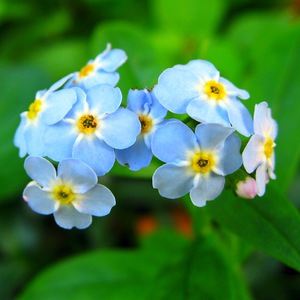 Prefers humid places. It grows in Asia and Europe, it is found in America, South Africa, it grows in Australia and New Zealand.
Prefers humid places. It grows in Asia and Europe, it is found in America, South Africa, it grows in Australia and New Zealand.
The plant can grow for a year, two, and also for many years. Stems reach 40 cm in height, branch out. Leaves, depending on the species, can be sessile, lanceolate, linear-lanceolate, spatulate. The plant blooms often blue with a yellow eye, as well as pink or white flowers, collected in an inflorescence - a curl. From May to mid-June, the plant has a flowering period, after which a fruit appears - a nut. One gram contains about 2000 seeds, which can be stored without damage to germination for up to 3 years. Seeds are black, shiny, ovoid. After sowing, germinate in 2-3 weeks.
In the spring you can often see forget-me-nots in English, French, German, Swedish flower beds, because they love and cherish it there. In Russia, it becomes a decoration of almost every garden.
Types of forget-me-nots
This genus has 50 species, 35 of them grow on the territory of the former USSR. These include:
- Alpine forget-me-not prefers the rocky soil of the alpine belt of the Alps, Carpathians, Caucasus. The perennial grows, forming a short rhizome and a dense rosette of basal grayish pubescent leaves. Dense bushes from 5 to 15 cm in the spring dress up a lush outfit of numerous flowers. Dark blue flowers appear on short inflorescences, which persist for 40-45 days from May. This plant is very fond of light, which is typical for rocky habitats. Reproduction takes place only by seeds. This forget-me-not served as the basis for the development of numerous varieties for the garden. Wild Alpine forget-me-not can not live in culture.
- Marsh forget-me-not prefers to grow along the banks of reservoirs, streams, near swamps. It can be found in the west of Russia, Transcaucasia, grows in the southern regions of Siberia, Central Europe, the Balkans, grows in Mongolia. The plant is considered perennial, but does not live long. Stems grow up to 30 cm upward, highly branched, tetrahedral. Lanceolate leaves of bright green color reach 8 cm in length and 2 cm in width. The flowers are pale blue in color, reaching a diameter of 1.2 cm.They are relatively large at first in dense curls, stretching over time, since they bloom from late spring to autumn, due to the fact that new shoots are constantly formed, while faded die off.
This species has several varieties, among which the spectacular "Thuringen", which forms dark blue flowers, stands out. Based on the forget-me-not swamp bred Semperflorens, the flowers of which are distinguished by a bright blue color and a yellow center. Swamp forget-me-not propagates by seeds, they are planted along watercourses, the plant is used as a decoration for the banks of reservoirs.
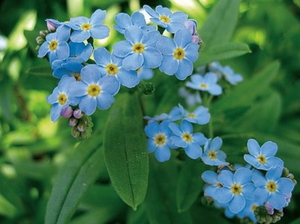 Forget-me-not alpine garden - This is a perennial flower, in culture it is used as a biennial. This plant is very undemanding. It is able to grow well and bloom profusely both in the shade and in the sun, but prefers partial shade. It becomes covered with flowers in the second half of spring. The middle strip of Russia can enjoy its bloom from May. It adapts to the growing climate and can withstand both spring drought and frost (up to 5 degrees). Blooms profusely for about 40 days. From the end of June, seeds ripen, which crumble, forming seedlings (in July), and by August they turn into dense beautiful bushes. Popular varieties:
Forget-me-not alpine garden - This is a perennial flower, in culture it is used as a biennial. This plant is very undemanding. It is able to grow well and bloom profusely both in the shade and in the sun, but prefers partial shade. It becomes covered with flowers in the second half of spring. The middle strip of Russia can enjoy its bloom from May. It adapts to the growing climate and can withstand both spring drought and frost (up to 5 degrees). Blooms profusely for about 40 days. From the end of June, seeds ripen, which crumble, forming seedlings (in July), and by August they turn into dense beautiful bushes. Popular varieties:- Victoria.
- Blauer Korb.
- Blue Ball.
- Indigo.
- Carmen King.
- Music.
- Forget-me-not forest can be seen in Central Europe, the Carpathians. This plant has delicate green leaves and prefers forest habitats as it loves shade and moisture. The plant is perennial, cultivated as biennial. Forms bushes that branch densely and reach 30 cm in height. Leaves are oblong-lanceolate. Flowers appear numerous, sky-blue in diameter up to 1 cm, collected in the apical inflorescences. Blooms for about 45 days from May, forms a fruit. There are many varieties with blue, blue and pink flowers. For example, Blue Bird.
- Forget-me-not-flowered occurs naturally in the Swiss Alps. The plant is perennial, but in the process of cultivation it became a two-year-old. The plant forms large dark blue flowers, there are also varieties with pink, white and blue colors.
Growing conditions
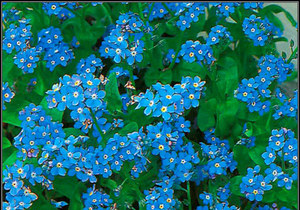 Forget-me-nots love shady places, but with high humidity they can grow in sunny areas. The soil should not be poor. Watering is needed only when necessary, the stream is directed directly to the roots. If the soil is waterlogged, it will lead to rotting of the root system, and the stems can also stretch out. If there is not enough moisture, then the flowering period will quickly disappear.
Forget-me-nots love shady places, but with high humidity they can grow in sunny areas. The soil should not be poor. Watering is needed only when necessary, the stream is directed directly to the roots. If the soil is waterlogged, it will lead to rotting of the root system, and the stems can also stretch out. If there is not enough moisture, then the flowering period will quickly disappear.
The plant loves feeding, therefore, it is imperative to apply different fertilizers. Suitable ammonium nitrate, superphosphate, potassium chloride, the ratio is as follows: 2 to 3 to 1. Loves forget-me-not and watering with mullein, which is diluted with water 1 to 10. After watering, the soil is mulched.
Reproduction
Forget-me-not is propagated by seeds. In 2 weeks after sowing in July-August, shoots will already appear, next spring they will already bloom in lush color. Varietal forget-me-nots are often propagated by cuttings. Shoot tops are cut in May or early June, after which the cuttings are planted in the prepared soil. The forget-me-not has a superficial root system, which is very convenient for transplanting a plant, even during the flowering period.
Landing
 For the plant to bloom from spring, you need to sow in autumn... They take a container with a hole for draining the water, fill in the substrate, which is prepared from the sod earth and sand, in a ratio of 2 to 1. Before sowing, it must be treated with a solution of potassium permanganate. The seeds are dipped in salted water to remove the empty ones. Selected seeds are washed in clean water and left to dry.
For the plant to bloom from spring, you need to sow in autumn... They take a container with a hole for draining the water, fill in the substrate, which is prepared from the sod earth and sand, in a ratio of 2 to 1. Before sowing, it must be treated with a solution of potassium permanganate. The seeds are dipped in salted water to remove the empty ones. Selected seeds are washed in clean water and left to dry.
Sow directly on the surface of the soil, lightly sprinkling with earth. Cover with paper from above until shoots appear. They should show up in a week. After the first real leaves appear, forget-me-not dive into containers, the plant is planted at a distance of at least 3 cm from each other. After that, containers with plants are transferred to a cold greenhouse until spring, in March the plant must be transferred to a warm room. At the end of April, forget-me-nots are planted in flower beds; the plant may already have buds.
In the second method, the plant is planted directly in a permanent place, that is, in open ground. This manipulation is performed in July, before sowing, humus and peat are introduced into the soil, nitrophosphate is added. Furrows are made into which seeds are poured, after which they are sprinkled with baking sand.
These blue eyes very stable in the cut... They can stand in a vase of cool, clear water when cut for almost a month. In place of the withered ones, new flowers will form, filling the room with the gentle glow of the "fire".
